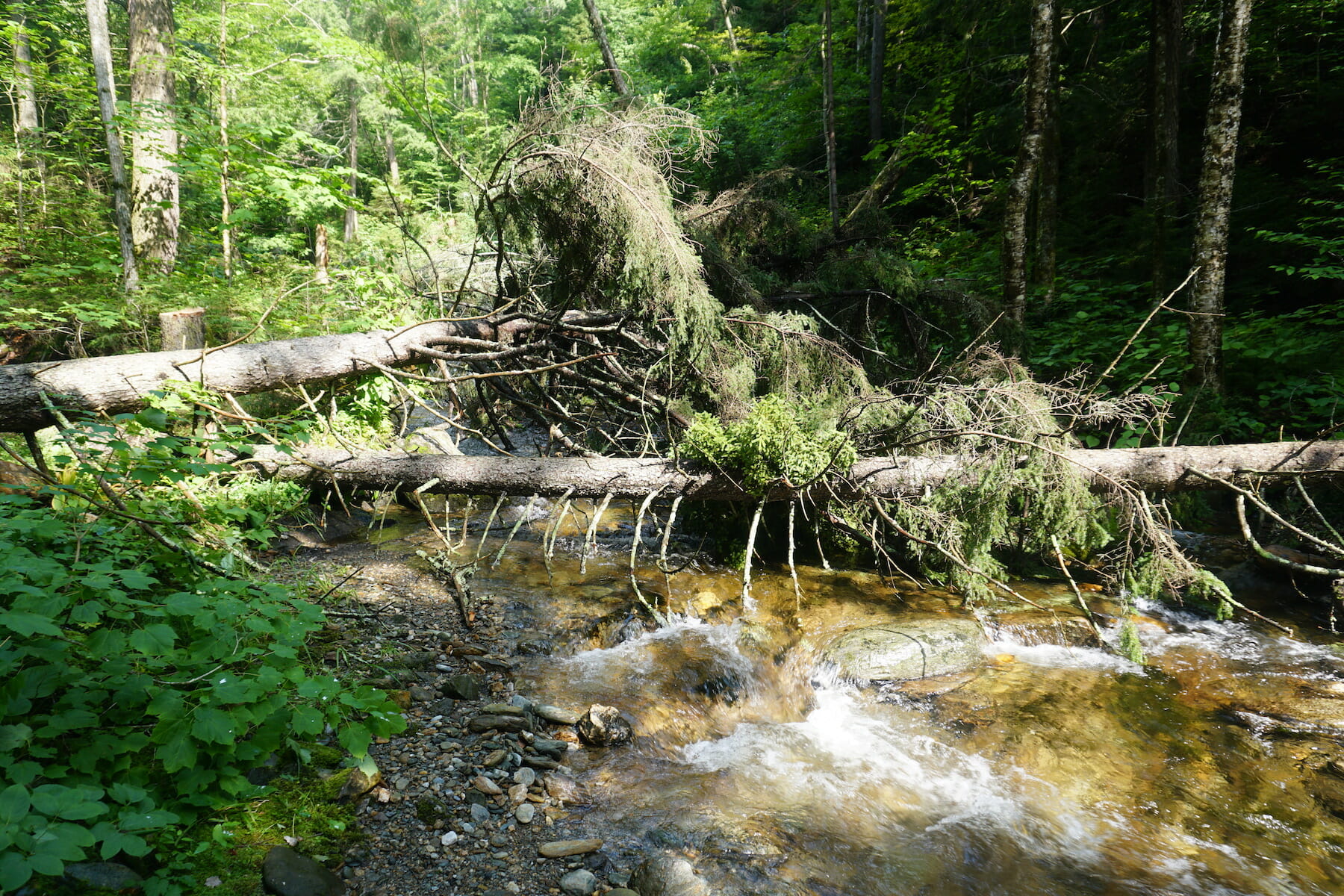By Erin Rodgers
A Trout Unlimited project in Vermont is improving fish habitat in an important native trout stream.
In July and August 2018, a field team of seven people — led by me and Joel DeStasio— installed a significant amount of large woody habitat on 3.5 miles of Michigan Brook in Pittsfield.
The team used a combination chop-and-drop and grip-hoist methods.
Michigan Brook is a tributary to the White River and falls within the U.S. Forest Service’s Robinson Integrated Resource Project Area.
Entirely on Green Mountain National Forest land, this project is part of a partnership with the Forest Service. This past year was the first year of stream habitat work that will be followed by more than 10 more miles of stream work over the next three years in the Robinson IRP.
As Forest Service-certified sawyers, TU staff members try to recreate naturally recruited wood jams that might happen when large trees fall during a wind or ice storm.
Building in-stream woody habitat using large wood (with half the trees being greater than 12 inches in diameter) is beneficial in several ways.
It helps restore protective cover over the stream and creates diverse stream hydraulics that scour pools, and helps streams retain smaller sediment and gravels perfect for trout spawning beds. This is critical for supporting robust populations of native brook trout found in the stream.
Large woody habitat also creates channel roughness that slows down and spreads out flood water, so in-stream wood is not only good for fish communities but also for human communities downstream.
As Trout Unlimited continues the work in the region, it will monitor fish populations in restored sections to track the impacts of the enhanced habitat.
Erin Rodgers is the project coordinator for Trout Unlimited’s New England Coldwater Restoration Program.



